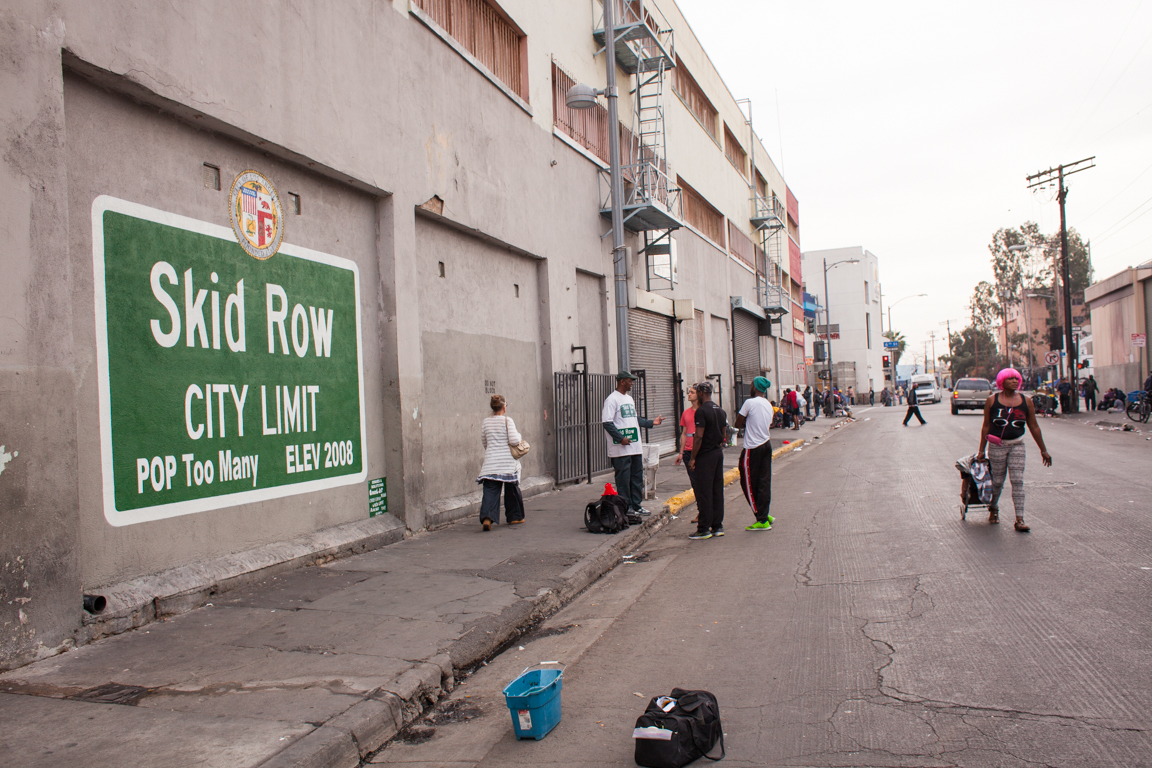[Editor’s Note: In the spirit of the south-of-Downtown residents’ protest
of a proposed project at 4043 Irving Pl., attorney Karl Manheim
addressed the following letter to City Hall.]
Oct. 20, 2008
Mayor and City Council
9770 Culver Blvd.
Culver City, CA 90232
Re: Appeal of Planning Commission Approval 4043 Irving Place
Date: Nov. 10, 2008
Honorable Mayor and Councilmembers:
I write to oppose the proposed project at 4043 Irving Pl. in its current form.
As a 25-year resident of Irving Place, I have watched the transformation
of this once “lovely little, charming” neighborhood into a thoroughfare
for Downtown and cross-city traffic. The 4043 project will only worsen
the situation. I believe the Planning Commission did not adequately
consider the adverse impacts, nor did it properly exercise its discretion.
Accordingly, I request that you sustain the appeal or remand this project
to the Commission for further consideration.
Traffic
In preparing a Negative Declaration for the 4043 Project, the Redevelopment
Agency determined that impact on neighborhood traffic would be negligible.
This is not a credible conclusion for two reasons. First, the number of vehicle
trips to and from the project in peak hours is projected to be fewer than the
number of units or parking spaces it contains. It strains credulity to believe
that residents, office tenants and their clients won’t be driving during peak
times, or won’t be driving in critical intersections near this mixed use
project (which is what the traffic study concludes). As Commissioner
Kuechle aptly noted, the report is obviously “missing some cars.”
This is an especially worrisome finding because not less than four nearby
intersections already suffer from “significant and unmitigatable” congestion.
Moreover, the Southern California Assn. of Governments (SCAG), in its
2007 Air Quality Management Plan, demonstrates that home-to-work
vehicle trips have increased at a far faster pace than transit trips or
telecommuting. SCAG indicates that traffic on local streets is projected to
increase 30 percent by 2030. Congestion is projected to increase over
200 times faster than new roadway capacity. Thus, the developer’s
prediction that the “proposed Project is not anticipated to result in
significant traffic impacts in the neighborhoods” is on shaky ground to
begin with.
But what makes these predictions even more suspect is the dismal track
record of traffic studies in the Irving Place neighborhood. The study
performed for Town Plaza predicted no more than 750 vehicle trips a
day on Irving Place once buildout had been completed. Yet, even
before Town Plaza Parcel B had been developed, the number of
daily trips in the neighborhood was well in excess of 1,000. When
development traffic studies have had such poor predictive value, it is
no wonder that area residents simply disbelieve the astonishingly
low numbers for the 4043 project. The City Council should be in disbelief, too.
Finally, the only solution the Planning Commission identified to
the project’s adverse traffic impact is one that would undo the traffic
mitigation measures instituted to relieve Town Plaza congestion. In
short, this “lovely little” neighborhood has already gone from bad to worse
in terms of traffic, and the 4043 project threatens to make it intolerable.
Parking
Approval of the Town Plaza/Screenland Project in 2000, and the
accompanying EIR, amendments to the Municipal Code, Zoning Code,
Design and Physical Development Plan, and the General Plan, were
all predicated upon a prescribed number of “pooled parking” spaces being
available to the Downtown project. Specifically, 61 parking spaces
in the Coast Media lot and an additional 36 spaces in the lot adjacent to
the Post Office were factored into the approval of Town Plaza.
The loss of these 61 (really 97) spaces will be felt throughout the
Downtown Overlay Zone, but most directly by the Irving Place
neighborhood. Already, there is insufficient on-street parking for residents.
Efforts undertaken as part of the Neighborhood Traffic Mitigation Plan (NTMP)
haven’t adequately solved the parking problem, which will be seriously
aggravated by the 4043 project. This is especially true since Town Plaza
is itself increasing by roughly 100,000 square feet of new retail and office
space (and the loss of parking on Parcel B). Indeed, the 2000
Town Plaza staff report noted that “additional [build-out] can only be permitted
if additional parking spaces are provided.” Rather than provide those
additional spaces, there is a significant net loss of parking spaces with
the 4043 project.
I believe the review process thus far has failed to consider the relationship
between the 4043 project and the 2000 Town Plaza approval conditions.
Indeed, the combined and synergistic effect of all the pending area
development (Culver/Duquesne, Lucerne/Higuera, Parcel B and 4043 Irving)
has simply not been considered. What happens if this critical mass causes
a “tipping point” where residential streets become just one big parking lot?
Failure to Exercise Lawfully Required Discretion
The Planning Commission was apparently under the mistaken belief that it
lacked legal authority to reject the project because it had previously been
approved by the Redevelopment Agency. This was best
expressed by Commissioner Kuechle when he said:
“I am not sure we have the authority to turn this project down [after the]
“Redevelopment Agency decided to sell the property on the terms that
they did. But that is absolutely clear to me something that we don’t have
the authority to do anything about. That’s for the people who appointed
us, not for us. And I’m not sure we have the authority to turn this project down.”
The Planning Commission absolutely had that authority. According to the
Culver City Municipal Code, § 3.03.230:
“The Planning Commission shall have the power and be required to:
B. “Exercise such control over zoning land subdivisions and building as
is granted to it by the governing body of the City and by the laws of
the State of California;
D. “Exercise such functions with respect to zoning or building as may be
prescribed by ordinance.”
Thus, the Planning Commission was required to find that the project is in
compliance with the City’s zoning and also in compliance with the City’s General
Plan. Given the errors that Commissioners identified in the traffic study and
the disproportionate size of the project in relation to the neighborhood, the
Commission had the authority, indeed the duty, to either reject the project or
attach mitigating conditions to approval. It was hardly sufficient to plead
with the developer to voluntarily downsize the project.
“Courts have interpreted these established rules of judicial review of
administrative action to find an abuse of discretion where … (2) there is a
failure to exercise discretion.” Thus, an agency decision must be set aside
where “the administrative agency is under an erroneous belief that it
cannot exercise discretion.”
For the foregoing reasons, it is respectfully requested that this
honorable Council reverse the action of the Planning Commission or
remand the matter to the Commission for reconsideration.
Karl Manheim
cc: Sol Blumenfeld
Carol Schwab
source: http://scaleback4043irving.com/







